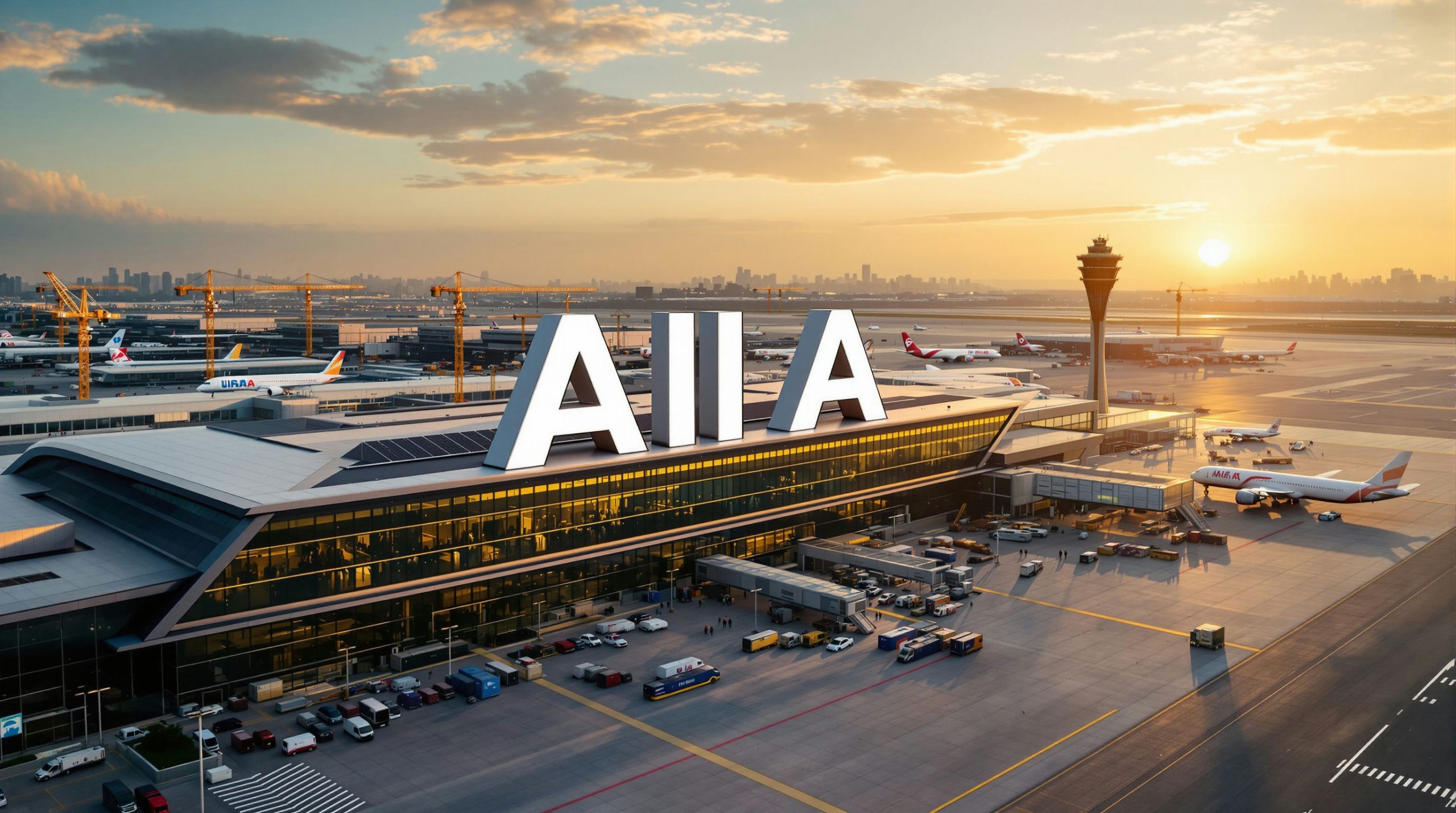Auckland Airport (ASX:AIA) Announces Regulatory Outcome as Commerce Commission Rejects Inquiry Request
Auckland Airport (ASX:AIA) has received a significant regulatory outcome with the Commerce Commission’s definitive rejection of Air New Zealand’s request for a section 56G Auckland Airport regulation inquiry. This important decision provides crucial regulatory certainty for investors, confirming that New Zealand’s existing airport oversight framework adequately protects consumer interests without necessitating additional intervention. With a market capitalisation of [Market Cap Placeholder] and [Shares on Issue Placeholder] shares on issue, Auckland Airport’s financial position is further supported by a [Cash Position Placeholder] cash balance.
The Commerce Commission’s thorough assessment concluded that a formal inquiry would “risk leading to greater costs for the sector” rather than delivering meaningful benefits. Following extensive evaluation through a dedicated “sprint project”, the regulator determined that existing mechanisms adequately balance infrastructure investment requirements with consumer protection obligations.
Commerce Commission Delivers Detailed Assessment of Airport Oversight
The Commerce Commission’s targeted evaluation examined whether additional regulatory intervention was necessary following Air New Zealand’s July challenge. Through systematic analysis of current oversight mechanisms, the regulator concluded that existing frameworks demonstrate effectiveness whilst maintaining appropriate incentives for essential infrastructure development.
This regulatory endorsement validates Auckland Airport’s $5.7 billion aeronautical infrastructure programme, which currently employs over 1,500 people on-site through its 10-year development timeline from 2023 to 2032. The Commission’s March 2024 pricing report had previously confirmed these capital investment plans as “reasonable, fit for purpose, and in the best interests of consumers”.
Key regulatory findings include:
- Current airport regulation regime demonstrates clear effectiveness for consumer protection
- Additional oversight mechanisms could increase operational costs without corresponding benefits
- Existing information disclosure requirements provide adequate transparency
- Regular pricing assessments ensure fair returns whilst preventing monopoly abuse
- Infrastructure investment incentives remain appropriately balanced
Chief Executive Carrie Hurihanganui emphasised the significance of this decision, stating: “Effective and stable regulation is essential for ongoing private investment in critical infrastructure, and today’s report provides ongoing regulatory certainty for investors.”
The Commission confirmed its intention to proceed with a scheduled information disclosure review next year, maintaining its commitment to continuous improvement whilst avoiding disruptive regulatory changes. This follows the ASX announcement of the Commission’s decision.
What Prompted Air New Zealand’s Challenge to Airport Regulation?
Air New Zealand’s regulatory challenge centred on concerns about future infrastructure costs stemming from Auckland Airport’s draft master plan extending to 2047. However, the airline’s submission relied heavily on speculative projections about potential expenditure rather than committed capital programmes.
Auckland Airport’s leadership characterised these concerns as based on “conjecture” and “speculation” about future developments that remain subject to demand validation, stakeholder consultation under the Civil Aviation Act, and regulatory oversight for any important commitments.
Air New Zealand’s primary concerns included:
- Projected increases in aeronautical charges over the long-term planning horizon
- Scale of proposed infrastructure developments outlined in the draft master plan
- Potential competitive impacts on airline operational cost structures
- Long-term capacity expansion investment requirements affecting industry dynamics
Auckland Airport responded by emphasising that the master plan represents a key vision requiring formal consultation processes rather than committed expenditure. All future developments remain subject to actual demand patterns, customer requirements, and thorough regulatory review before implementation.
The airport maintains relationships with 27 airline customers, and management indicated that differences of opinion regarding proposed investment represent “an inherent and expected feature of regulated airports around the world”. These discussions reflect the necessary balance between competing short-term airline priorities and long-term consumer interests.
How Does New Zealand’s Airport Economic Regulation Framework Function?
New Zealand’s airport economic regulation under Part 4 of the Commerce Act establishes sophisticated oversight preventing monopoly pricing abuse whilst maintaining incentives for essential infrastructure investment. This framework provides predictable revenue mechanisms that protect investor interests whilst ensuring consumer benefits through transparent processes.
The regulatory structure enables Auckland Airport to execute substantial capital programmes with confidence whilst maintaining stakeholder engagement across diverse airline relationships. Price monitoring on aeronautical services prevents monopoly abuse whilst information disclosure requirements ensure transparency for major capital investments.
Core regulatory components encompass:
- Continuous monitoring of pricing decisions and infrastructure investment programmes
- Regular assessment of capital development plans against consumer interest criteria
- Information disclosure requirements providing transparency for major project commitments
- Flexible frameworks enabling infrastructure adaptation to changing demand patterns
- Balance between airline commercial interests and long-term consumer protection
Between 2023 and 2027, Auckland Airport’s regulated per passenger domestic jet charges are rising by an average of $1.26 annually – an increase the Commission has deemed reasonable for the capacity improvements being delivered through the current infrastructure programme.
The regulatory framework’s effectiveness demonstrates through its ability to facilitate private capital deployment for essential national infrastructure whilst maintaining public confidence in pricing methodologies and investment decisions.
Why Did the Commerce Commission Reject Additional Regulatory Intervention?
The Commerce Commission’s detailed evaluation determined that existing oversight mechanisms provide adequate consumer protection whilst enabling essential infrastructure development. Additional regulatory intervention risked creating unnecessary costs across the aviation sector without delivering corresponding benefits to stakeholders.
The regulator’s analysis confirmed that current frameworks effectively balance infrastructure investment requirements with consumer protection obligations. Information disclosure mechanisms provide transparency whilst pricing oversight prevents monopoly abuse through regular assessment of capital programmes and operational decisions.
Commission reasoning included:
- Existing regulatory regime demonstrates clear effectiveness for consumer outcomes
- Current oversight mechanisms provide adequate safeguards against pricing abuse
- Additional intervention could increase sector costs without proportionate benefits
- Information disclosure requirements enable transparent assessment of major investments
- Regular review cycles ensure continued effectiveness without disruptive changes
The decision reinforces the March 2024 pricing assessment, which validated Auckland Airport’s infrastructure investment methodology whilst confirming consumer benefit delivery. This regulatory stability enables confident capital deployment across the airport’s substantial development programme.
Furthermore, the Government has reconfirmed that no legislative changes to Part 4 of the Commerce Act are currently planned, providing additional certainty for infrastructure investment decisions extending through the next decade.
The Commission’s approach demonstrates sophisticated understanding of infrastructure economics, recognising that regulatory stability enables private capital deployment for essential national assets whilst maintaining appropriate consumer protection mechanisms.
What Does This Decision Mean for Auckland Airport’s Infrastructure Programme?
Auckland Airport’s $5.7 billion infrastructure programme represents New Zealand’s largest private infrastructure investment, designed to enhance capacity, resilience, and customer experience through systematic development phases extending to 2032. The Commerce Commission’s regulatory certainty enables confident progression through planned upgrades.
Investment programme highlights encompass:
- 10-year development timeline delivering systematic infrastructure improvements
- Over 1,500 workers currently employed across construction and development projects
- Focus on essential resilience protecting against weather disruptions and operational challenges
- Capacity enhancements supporting passenger volume growth and freight expansion
- Technology integration improving operational efficiency and customer experience
The programme creates modernised gateway infrastructure supporting New Zealand’s tourism recovery and international trade connectivity whilst maintaining competitive pricing structures through regulatory oversight mechanisms.
Phased development approaches enable responsive adaptation to demand patterns whilst delivering essential improvements across operational capacity, passenger processing efficiency, and infrastructure resilience against environmental challenges.
How Will Regulatory Certainty Impact Investor Confidence?
The Commerce Commission’s definitive rejection of additional regulatory intervention provides crucial regulatory certainty for infrastructure development through established frameworks. This stability enables confident capital allocation across Auckland Airport’s substantial development programme whilst maintaining stakeholder confidence in regulatory processes.
Investment protection benefits include:
- Stable regulatory environment encouraging continued private capital deployment
- Clear pricing methodologies reducing uncertainty for long-term infrastructure planning
- Regular review cycles ensuring fair returns on substantial infrastructure investments
- Consumer protection mechanisms maintaining public support for private airport ownership
- Transparent decision-making processes protecting stakeholder interests across aviation sector
The decision validates Auckland Airport’s position as a critical infrastructure provider requiring substantial ongoing investment to maintain New Zealand’s international connectivity and economic competitiveness.
With 27 airline customers and diversified revenue streams spanning aeronautical and commercial activities, Auckland Airport demonstrates operational resilience that regulatory certainty now reinforces through predictable oversight mechanisms.
Investment Analysis: Auckland Airport’s Key Position Following Regulatory Outcome
Auckland Airport (ASX:AIA) presents compelling investment characteristics, combining natural monopoly advantages with a stable regulatory environment and substantial infrastructure investment capability. The Commerce Commission’s decision validates balanced stakeholder management whilst delivering essential national infrastructure through private capital deployment.
The airport’s key position as New Zealand’s primary international gateway provides defensible competitive positioning that a predictable regulatory framework now protects through established oversight frameworks. Diversified revenue generation across aeronautical and commercial operations demonstrates resilience across varying market conditions.
Core investment strengths encompass:
- Key monopoly asset serving New Zealand’s essential international gateway functions
- Regulatory validation of investment methodology and pricing approaches through established oversight
- Diversified revenue streams across aeronautical charges and commercial property development
- Substantial infrastructure programme creating long-term competitive positioning and operational capacity
- Experienced management demonstrating effective stakeholder engagement across regulatory processes
The $5.7 billion infrastructure programme represents substantial capital commitment supporting New Zealand’s economic connectivity whilst creating employment opportunities and enhanced operational capacity for future growth requirements.
Tourism recovery trends support passenger volume restoration whilst infrastructure improvements enhance operational efficiency
Want more ASX news?
Join over 20,000 investors who rely on StockWire X for comprehensive analysis and expert insights on non-resource ASX companies, including key infrastructure developments and regulatory outcomes. Access detailed coverage that transforms complex market information—such as Auckland Airport’s recent regulatory certainty—into actionable insights to support informed investment decisions across technology, biotechnology, healthcare, finance, and industrial sectors at www.google.com.










